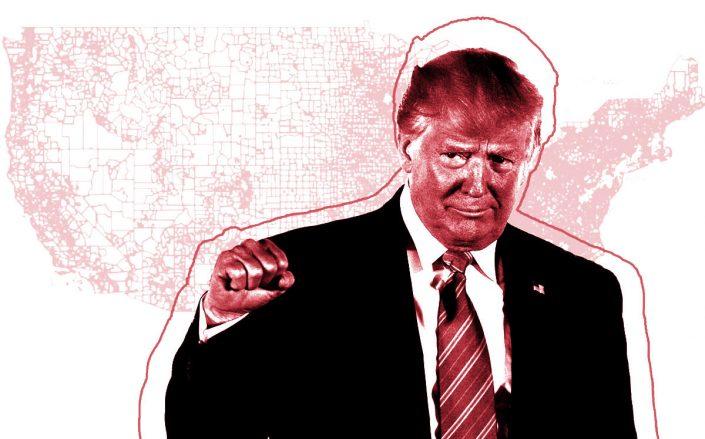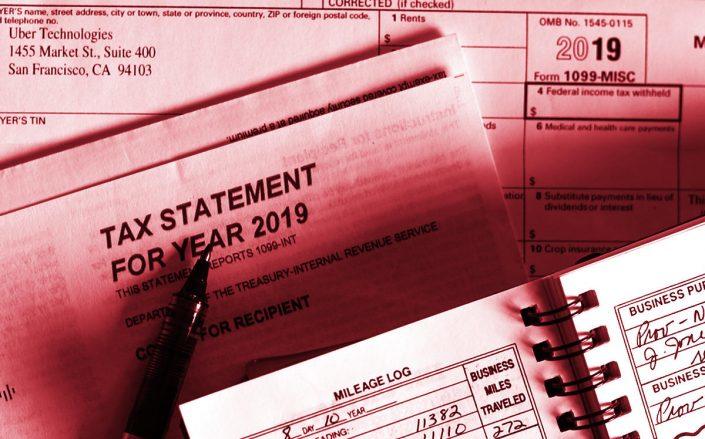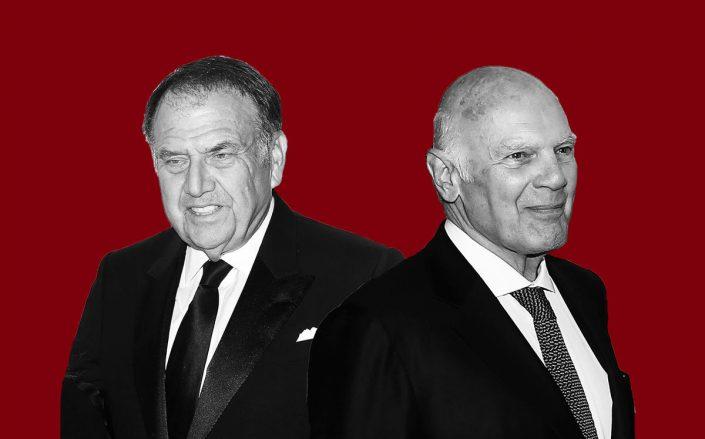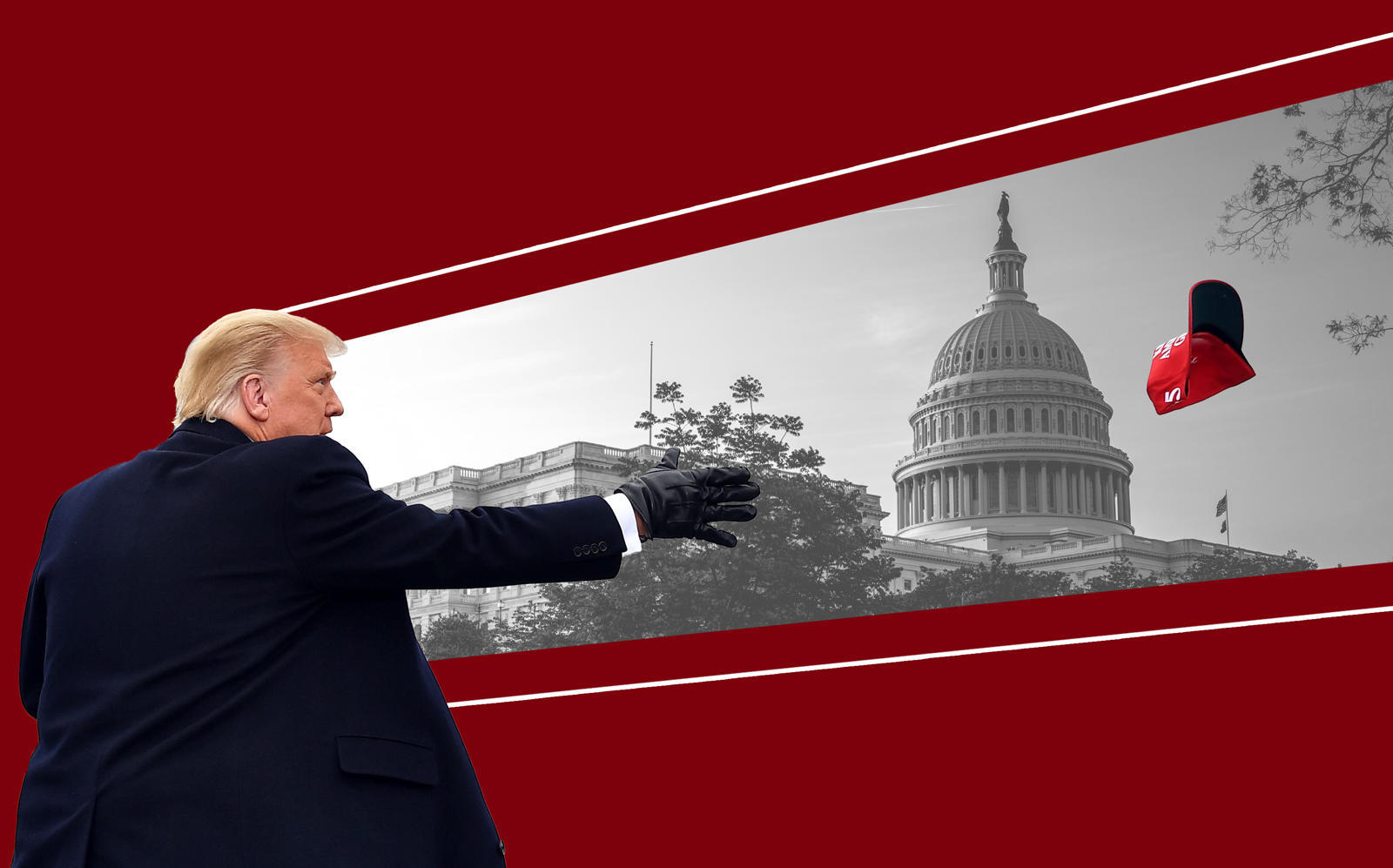Nearly four years ago, Donald Trump was sworn in as the nation’s first developer-in-chief, surrounded by prominent figures from New York City real estate.
The sight of his industry friends on the national stage seemed to send a clear message: Real estate had a powerful ally in the White House. But as Trump’s term comes to a close, a look back at his actions shows that his administration has been a mixed bag for the industry.
Tax breaks passed in 2017 were a boon to commercial real estate, and the makeup of various groups appointed by the president hinted that New York developers had his ear. But immigration policies and a trade war with China drove down foreign investment in luxury properties and hiked costs of construction materials.
Caps on state and local tax deductions drew the ire of residential brokers in the Northeast and California. And having a regulation-cutting real estate developer in the Oval Office likely fueled anti-industry sentiment in local politics and pushed blue-state legislatures further to the left.
“All in all, it hasn’t been an advantage to have a developer in the White House,” said George Arzt, a New York City-based political consultant whose clients include builders. “I think there is a general wariness about Trump among real estate developers. He has his supporters, but for the most part, people are very wary.”
Foreign investment fatigue

(Images via Getty Images and Mango Map)
U.S. real estate has long been viewed as a safe place for overseas investors to park their cash. But the flow of foreign money has declined each of the past three years.
After peaking at $153 billion in 2017, foreign investment in U.S. homes fell to $121 billion the following year and $77.9 billion in 2019, according to a report by the National Association of Realtors. Between April 2019 and March 2020, sales slid another 5 percent to $74 billion. The report also found that since 2016, the number of immigrants who have obtained lawful permanent status in the U.S. has declined by roughly 90,000.
“The major investors have been locked out. Chinese investment is no longer welcomed,” said Ed Mermelstein, a real estate attorney and co-founder of One and Only Holdings, a luxury real estate investment consulting firm. “Many other foreign investors have, in a sense, abandoned the U.S. due to visa issues, banking issues and the lack of feeling comfortable with the current administration’s position on keeping America protected from outside sources.”
In recent years, developers and investors have also moved away from the EB-5 program, which allows foreign investors to obtain a green card in exchange for investing in job-creating U.S. businesses. Despite opposition from the real estate industry, the Trump administration increased the minimum investment required for the program. It also made it harder for state governments to gerrymander census tracts. (EB-5 investments are supposed to target businesses in areas of high unemployment.)
Changes to the program, including lowering the investment threshold and making it easier for investors to obtain visas, were floated in March as part of Congress’ $2 trillion federal stimulus package bill, but ultimately were dropped.
Taxes gained, taxes lost

Mermelstein noted that while the luxury sector has struggled from a lack of foreign investment, housing markets — even throughout the pandemic — have remained “quite heated up,” which he attributed to record-low mortgage rates.
The housing market was dampened for some, though, with Republicans’ 2017 federal tax code overhaul. The measure capped deductions of state and local taxes at $10,000, a move that critics said made home ownership more expensive in high-tax states such as New York and New Jersey and drove buyers elsewhere.
The federal tax overhaul did, however, include major benefits for the industry. It capped the tax rate for “pass-through” businesses, such as LLCs and S-Corps. It introduced the Opportunity Zone program, which allows developers to defer or escape capital gains taxes if they invest in one of 8,700-plus areas designated as “distressed.” Investors have pumped at least $12 billion into Opportunity Zones as of September 2020, according to accounting firm Novogradac.
During a debate in October, the president praised the program, saying Black and Hispanic communities have been its biggest beneficiaries. Critics have said it has done the opposite by encouraging the construction of luxury towers and rewarding deep-pocketed developers.
Sean Raft, chief administrative officer of Urban Catalyst, an equity fund focused on Opportunity Zones in San Jose, has watched the program evolve over the last three years and seen his investor base become increasingly comfortable with it.
“There wasn’t a lot of clarity when it first came out,” he said. “It was a little bit of a roller coaster in terms of structuring.”
The Internal Revenue Service and Department of the Treasury released guidance in April 2019 that cleared up much of the uncertainty. Still, Raft said the program is in a “fragile” place. He expects changes will be made under either a Biden or Trump administration, likely in the form of reporting requirements. But he thinks more substantial retroactive changes to the program could kill it.
“The Opportunity Zone law, I look at it like it is a prototype,” he said. “A prototype is not perfect. But if we destroy the prototypes, there will be no future versions.”
A little help from his friends

Richard LeFrak and Steve Roth (Credit: Getty Images
Just before he was inaugurated, Trump tapped developers Richard LeFrak and Steve Roth to lead a new infrastructure advisory council. Though the council was dissolved a few months later as members quit in the wake of Trump’s Charlottesville comments, its creation was part of a pattern of Trump bringing in people he knew from the business world. Most recently, in April, the president appointed several real estate executives to an economic recovery council, including Roth, Blackstone Group’s Jonathan Gray, David Simon of mall giant Simon Property Group, Stephen Ross of Related Companies and Steve Witkoff of the Witkoff Group.
But being associated with Trump has also backfired on industry bigwigs. Reports that Related’s Ross was hosting a fundraiser for the president last year inspired calls to boycott the developer’s other business ventures, including Equinox and SoulCycle. Ross later said he regretted the backlash suffered by his partners.
On a larger scale, many have pointed to Trump’s presidency as a galvanizing force in local politics. Riding a wave of motivated, Trump-hating voters, Democrats in New York took control of the state Senate in the 2018 elections and the next year made massive, pro-tenant reforms to the state’s rent stabilization law. Socialists, who until recently were fringe players in New York politics, have won several seats. And real estate contributions, once a reliable source of campaign cash, are now viewed by many as a liability. Several mayoral and City Council candidates are rejecting them.
It might not be possible to put that genie back in the bottle.
“There’s definitely been a huge wave of anti-real estate sentiment from the political standpoint, and that probably has quite a bit to do with the current administration,” Mermelstein said. “Having spoken to many progressive government officials, I don’t believe a change in administration will change the flow of those waters.”
Jon Needell, president and chief investment officer at California-based Kairos Investment Management, said Trump’s time in office has proven to be both positive and negative for the industry. Trump has kept the capital gains tax rate low and maintained the 1031 tax exchange program, Needell said. At the same time, having a developer as president has thrown an unwelcome spotlight on what many in the industry consider part of the normal course of business, such as the use of depreciation to minimize tax bills.
“The reality is, some of the things that stayed under the radar may get more attention,” he said. Needell added that he considers recent reports that Trump paid only $750 in taxes in 2016 and 2017 a different matter entirely, as that was made possible by huge losses.
“That sheds a bright light on something I don’t get,” he said. “And all that’s going to happen is I’m going to get punished for it.”
